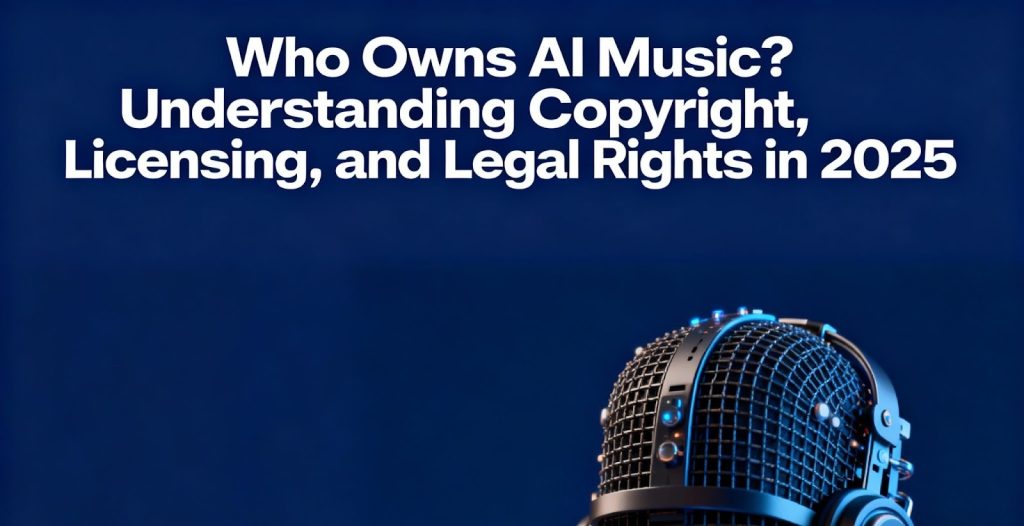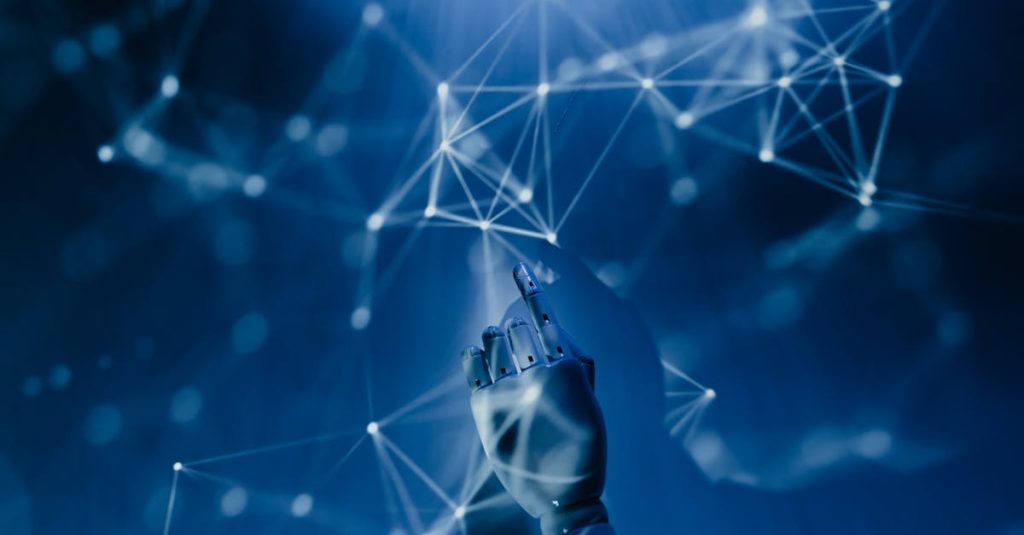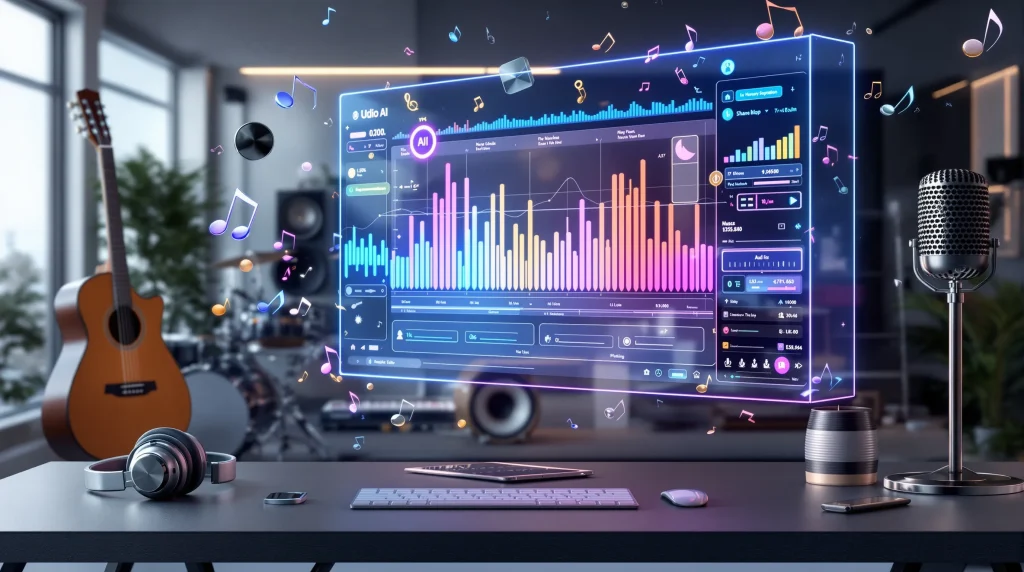К 2025 году композиции, созданные искусственным интеллектом, будут составлять значительную часть новые релизы, и это заставляет задуматься о том, кому принадлежат юридические права на эти произведения. Освоение авторских прав на музыку, созданную искусственным интеллектом, жизненно важно для музыкантов, продюсеров и создателей контента, стремящихся защитить свои композиции, созданные с помощью искусственного интеллекта, и уверенно их монетизировать. В этой статье исследуются юридические определения авторства и оригинальности, анализируются рамки коммерческого лицензирования, рассматриваются знаковые прецеденты и глобальное руководство Бюро по авторскому праву, разъясняются Политика Муреки для своей платформы искусственного интеллекта, генерирующей музыку, и прогнозирует возникающие тенденции наряду с практическими шагами по защите творческих результатов. Читатели получат четкие стратегии по обеспечению соответствия творческого вклада человека требованиям регистрации, согласованию условий лицензирования, навигации по меняющимся правилам и обеспечению долгосрочных прав при создании композиций с помощью генеративных инструментов. Понимание этих аспектов закладывает основу для изучения подробных критериев собственности и моделей лицензирования, которые определяют будущее музыки ИИ.
Что определяет авторство и оригинальность в музыке, созданной искусственным интеллектом?
Авторство в музыке, созданной ИИ, зависит от очевидного творческого вклада человека, который удовлетворяет стандартам оригинальности в соответствии с действующим законодательством об авторском праве. Правовые рамки требуют, чтобы “автор” осуществлял значимый контроль над мелодией, гармонией или аранжировкой, гарантируя, что конечная композиция отражает личный творческий выбор, а не полностью автоматизированный результат. Демонстрация такого участия подтверждает право на регистрацию авторских прав, защищая композиторов от несанкционированного повторного использования. Признание того, как участие человека создает право на защиту, естественным образом приводит к изучению формальных определений и пороговых значений, применяемых реестрами и судами.
Как определяется авторство человека в контексте музыки, созданной искусственным интеллектом?
Человеческое авторство требует активных решений при создании композиции, выборе музыкальных мотивов, оперативной корректировки и редакторских доработок, которые формируют окончательный вариант произведения. Суды и ведомства по авторскому праву оценивают, выходит ли вклад пользователя за рамки простого нажатия кнопок, изучая степень творческого влияния - например, указание темпа, инструментария или мелодических фрагментов. Такой подход гарантирует, что ИИ выступает в роли инструмента под руководством человека, а не независимого творца. Четкое понимание критериев авторства создает основу для понимания того, как пороги оригинальности применяются к этим совместным работам.
Каков порог оригинальности для авторского права на музыку, созданную искусственным интеллектом?
Оригинальность требует, чтобы композиция воплощала достаточное личное самовыражение и творческую искру, а не была просто набором типовых или ранее существовавших элементов. Реестры оценивают, привносят ли подсказки человека или ручные правки отличительные черты, такие как уникальные аккордовые прогрессии или новые мелодические контуры. На практике одних лишь незначительных изменений может оказаться недостаточно; человек-создатель должен запечатлеть характерные черты, отличающие произведение в общей структуре. Признание этих стандартов позволяет понять, как треки, созданные с помощью ИИ, могут претендовать на правовую охрану.
Как инженерия подсказок влияет на авторские права ИИ на музыку?
Инженерия подсказок - это создание точных инструкций, которые направляют системы искусственного интеллекта на создание уникальных музыкальных результатов. Создавая подробные подсказки, определяющие стиль, настроение, ритм и инструментарий, автор оказывает значимое влияние на процесс генерации. Такая практика возвышает роль человека, усиливая претензии на авторство и поддерживая оригинальность произведения при регистрации. Понимание влияния инженерии подсказок позволяет понять, почему разработка подсказок играет центральную роль в обеспечении надежного авторского права на композиции, созданные с помощью ИИ.
Растущая сложность искусственного интеллекта в творческих областях требует переоценки существующих рамок авторского права для обеспечения справедливости и защиты творческих работников.
Как устроены модели лицензирования музыки ИИ для коммерческого использования?
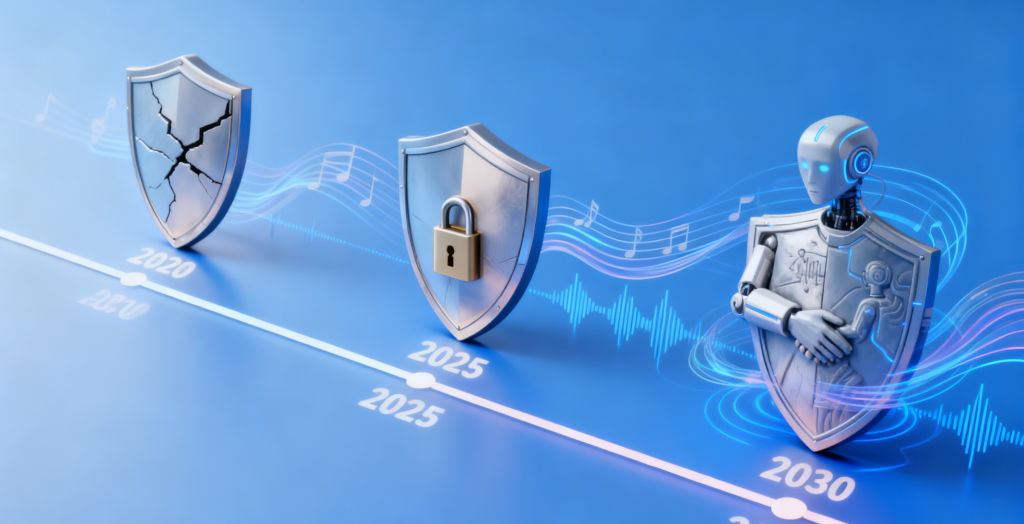
Модели лицензирования музыки ИИ определяют объем прав на использование, распределение роялти и требования к атрибуции для коммерческого использования. Рамки лицензирования варьируются от соглашений без роялти до структур разделения доходов, которые вознаграждают как поставщиков платформ, так и авторов-людей. Четкие лицензионные условия позволяют компаниям и отдельным исполнителям уверенно использовать созданные ИИ треки, избегая споров о праве собственности или невыплаченных доходах. Более внимательное изучение распространенных соглашений проясняет, как распределяются права и обязанности между заинтересованными сторонами.
Прежде чем рассматривать конкретные соглашения, проведите сравнение трех распространенных подходов к лицензированию музыки в искусственном интеллекте:
| Категория лицензии | Ключевая особенность | Польза от использования |
|---|---|---|
| Роялти-фри | Единовременный платеж предоставляет широкие права | Упрощает использование в рекламе и видеороликах |
| Распределение доходов | Платформа и создатель делят доходы от потоковой передачи | Поощряет постоянное сотрудничество |
| Коммерческий заказ | Ограничения на эксклюзивность и использование можно согласовать | Индивидуальная защита для брендированных кампаний |
Какие существуют различные лицензионные соглашения для музыки, созданной искусственным интеллектом?
- Безвозмездная лицензия предоставляет бессрочные права на использование после единовременной оплаты, обеспечивая неограниченное распространение без постоянных отчислений.
- Договор о разделе доходов распределяет будущий доход между операторами платформы и людьми, вносящими свой вклад, в зависимости от результатов потокового вещания или лицензирования.
- Индивидуальная коммерческая лицензия обсуждается в каждом конкретном случае, устанавливая исключительное использование, территориальные ограничения и условия компенсации.
Понимание каждого типа соглашения помогает композиторам выбрать модель, которая соответствует масштабу и целям монетизации их проекта.
Как собираются и распределяются роялти в музыкальных экосистемах ИИ?
Сбор роялти в музыкальных экосистемах ИИ часто интегрируется с организациями по защите прав исполнителей или платформами цифровой дистрибуции. Потоковые трансляции и публичные выступления приносят доход за счет отслеживаемых воспроизведений, который затем распределяется между авторами и поставщиками платформ в соответствии с согласованными долями. Некоторые сервисы искусственного интеллекта автоматизируют отчетность, консолидируя данные из потоковых сервисов в единые информационные панели. Четкая видимость потоков роялти укрепляет доверие и обеспечивает справедливое вознаграждение для всех участников.
Какие лицензионные условия должны понимать создатели музыки для искусственного интеллекта?
Ключевые элементы договора в музыкальных лицензиях AI включают в себя:
- Сфера использования, определяющая платформы, типы медиа и географические территории.
- Оговорки об эксклюзивности, уточняющие, может ли трек быть лицензирован где-либо еще.
- Ставка роялти или процентное соотношение доходов, подробная информация о структуре вознаграждения.
- Требования к атрибуции, указание текста кредита или экранных упоминаний.
Знакомство с этими условиями позволяет авторам заключать соглашения, защищающие их интересы и оптимизирующие доходы.
Каковы основные юридические проблемы и прецеденты в области авторского права на музыку в искусственном интеллекте?
Авторское право на музыку, созданную искусственным интеллектом, сталкивается с проблемами, связанными с ясностью правообладания, рисками нарушения прав, связанными с обучающими данными, и меняющейся позицией регулирующих органов. Суды и патентные ведомства все чаще сталкиваются со спорами о том, имеют ли право на охрану полностью созданные ИИ композиции, как следует поступать с производными произведениями и кто несет ответственность за несанкционированные сэмплы. Понимание этих проблем позволяет выявить правовой ландшафт, определяющий будущее создание и использование музыки с помощью ИИ.
Какие знаковые дела сформировали закон об авторском праве на музыку AI?
Среди значимых прецедентов - решения Бюро по авторскому праву США об отказе в регистрации полностью автоматизированных произведений без авторства человека, а также ранние решения, разъясняющие, что незначительных человеческих доработок может быть недостаточно.
Как глобальные ведомства по авторскому праву решают проблему владения музыкой в искусственном интеллекте?
В разных юрисдикциях подчеркивается авторство человека, но при этом признаются генеративные инструменты:
- Бюро по авторским правам США выпустило руководство, подтверждающее, что работы, созданные с помощью ИИ, требуют значительного участия человека.
- ВОИС призывает государства-члены обновить рамочные документы для учета сотрудничества в области ИИ в рамках традиционных принципов авторского права.
- Европейский союз рассматривает поправки к Закону об искусственном интеллекте, которые могут установить новые категории прав для творений, созданных с помощью машин.
Каковы новые правовые вопросы в области интеллектуальной собственности на музыку с использованием ИИ?
Новые юридические проблемы в этой области включают:
- Нарушение данных обучения, когда ИИ использует нелицензионные образцы из треков, защищенных авторским правом.
- Границы добросовестного использования для ремиксов и мэшапов, созданных ИИ.
- Распределение ответственности за производные произведения, созданные искусственным интеллектом в рамках оспариваемых прав на образец.
Решение этих проблем имеет решающее значение для обеспечения безопасности как авторов, так и платформ.
Интеграция искусственного интеллекта в создание музыки представляет собой сложный ландшафт, в котором права людей-создателей должны быть сбалансированы с возможностями генеративных технологий.
Какова политика Mureka в области авторского права на владение музыкой ИИ?
Политика компании Mureka гарантирует, что пользователи сохраняют все права на музыку, созданную ИИ, при условии, что они вносят значимый творческий вклад с помощью подсказок и правок. (declom.com) Такая гарантия права собственности позволяет авторам регистрировать и коммерциализировать треки без ограничений, налагаемых платформой. Разъясняя права пользователей, Mureka позиционирует свою Генератор и редактор музыки AI как инструменты, уважающие традиционные нормы авторского права и одновременно способствующие инновациям.
Как пользователи Mureka сохраняют права на музыку, созданную искусственным интеллектом?
Пользователи Платформа Mureka надежное владение:
- Составление подробных подсказок которые определяют мелодию, гармонию и стилистическое направление.
- Редактирование созданных дорожек с помощью встроенный музыкальный редактор усовершенствовать структуру или приборы.
- Документирование этапов создания, включая журналы подсказок и истории ревизий.
Как авторы могут коммерциализировать музыку, созданную с помощью Mureka?
- Регистрация композиции в соответствующем ведомстве по авторским правам после завершения редактирования.
- Выбор соответствующая модель лицензирования-без роялти, с разделением доходов или по индивидуальному заказу - для распространения через потоковые платформы или синхронного размещения.
- Оперативное ведение и редактирование записей, подтверждающих право собственности в ходе переговоров.
Каковы условия обслуживания в отношении авторских прав на музыку ИИ на Mureka?
- Пользователи сохраняют все права и интересы на оригинальные музыкальные произведения, если они вносят достаточный творческий вклад.
- Библиотеки сэмплов платформы лицензированы для коммерческого использования в созданных треках.
- Мурика отказывается от ответственности за несанкционированный контент третьих лиц в пользовательских подсказках.
Каковы будущие тенденции и прогнозы в области авторского права на музыку с использованием искусственного интеллекта?
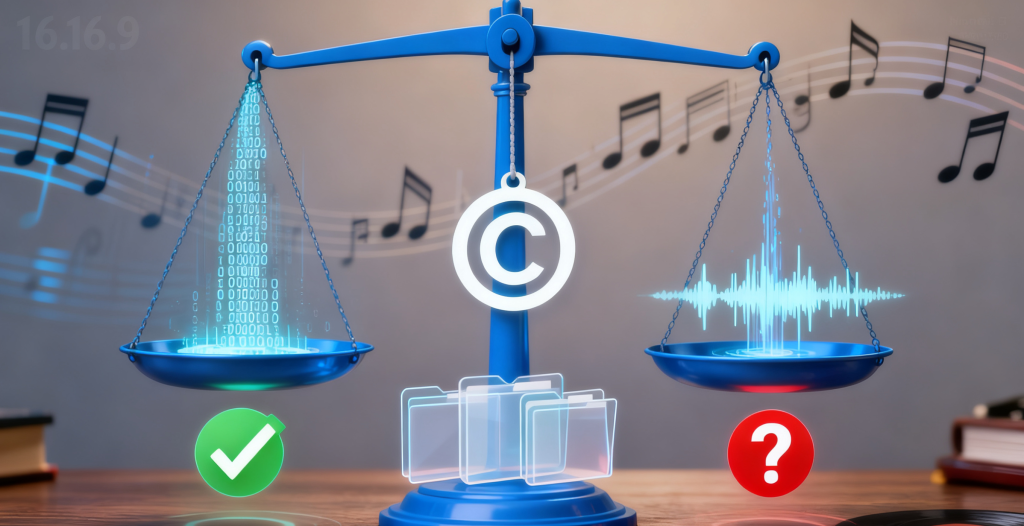
Законодательство об авторском праве на музыку с использованием ИИ ждет значительная трансформация по мере того, как законодатели, суды и отраслевые организации будут уточнять определения авторства, прав на данные и норм лицензирования. Появляющиеся рамки могут ввести специальные категории защиты для совместных работ ИИ, требуя прозрачности алгоритмических вкладов и источников данных. Предвидение этих изменений поможет авторам заблаговременно адаптировать свою практику.
Какие законодательные изменения ожидаются в отношении владения музыкой в искусственном интеллекте?
Вероятные события включают:
- Кодифицированные требования к пороговым значениям совместной работы человека и ИИ для получения авторских прав.
- Новое обязательное раскрытие информации об источниках обучения моделей ИИ в коммерческих релизах.
- Создание отдельных правовых конструкций, признающих совместное человеко-машинное авторство.
Эти изменения направлены на обеспечение баланса между инновациями и соблюдением установленных прав интеллектуальной собственности.
Как новые технологии повлияют на интеллектуальную собственность в музыке?
Такие технологии, как отслеживание происхождения в блокчейне и водяные знаки ИИ, повысят прозрачность, позволяя авторам автоматически документировать происхождение композиций и права на их использование. Инструменты "отпечатков пальцев" могут выявлять нелицензионные образцы в обучающих наборах данных, снижая риски нарушения авторских прав. Интеграция этих систем в генеративные платформы будет способствовать соблюдению правовых норм.
Какие этические дебаты возникают вокруг музыки искусственного интеллекта и интеллектуальной собственности?
Этические дискуссии сосредоточены на следующих вопросах:
- Риск обесценивания человеческого мастерства благодаря массовому ИИ-контенту.
- Ошибки в результатах работы ИИ из-за искаженных или неодобренных данных обучения.
- Обязательства по прозрачности для раскрытия компонентов, созданных ИИ, в опубликованных работах.
Участие в этих дискуссиях способствует ответственному развитию и справедливому признанию заслуг создателей человечества.
Как авторы могут защитить свои законные права при использовании музыки искусственного интеллекта?
Защита прав на музыку ИИ требует активного документирования, четкого лицензирования и осведомленности о правовых основах. Сочетая тщательное ведение документации с грамотным ведением переговоров по контракту, авторы могут укрепить свои права и избежать споров. Применение лучших практик гарантирует, что композиции, созданные с помощью искусственного интеллекта, получат ту же защиту, что и традиционные произведения.
Какие шаги обеспечат защиту авторских прав на композиции, созданные искусственным интеллектом?
- Записывайте журналы подсказок, истории версий и заметки о редактировании, чтобы подтвердить человеческий вклад. (musicbusinessworldwide.com)
- Применяйте уникальные творческие решения при создании и редактировании, чтобы соответствовать требованиям оригинальности. (musicbusinessworldwide.com)
- Зарегистрируйте готовые композиции в бюро авторских прав, представив документацию о процессе создания. (musicbusinessworldwide.com)
Как лицензионные соглашения защищают права на использование музыки искусственного интеллекта?
- Четкое определение разрешенных видов использования, территории и продолжительности действия контракта.
- Уточнение распределения доходов и обязательств по распределению во избежание недоразумений.
- Включение положений о возмещении убытков для урегулирования возможных претензий третьих сторон в связи с нарушением прав.
Грамотно составленные соглашения минимизируют риски и защищают как авторов, так и лицензиаров.
Какие ресурсы доступны для понимания юридических прав AI Music?
- Официальное руководство национального ведомства по авторскому праву по произведениям, созданным с помощью искусственного интеллекта.
- Отчеты ВОИС о генеративном ИИ и системах интеллектуальной собственности.
- Публикации ассоциации музыкальной индустрии, предлагающие лучшие практики и типовые контракты.
- Научные статьи в журналах по праву интеллектуальной собственности, в которых рассматриваются конкретные примеры и тенденции.
Консультации с этими ресурсами углубляют правовую осведомленность и способствуют принятию стратегических решений.
Каковы общие вопросы о праве собственности на музыку AI и авторском праве?
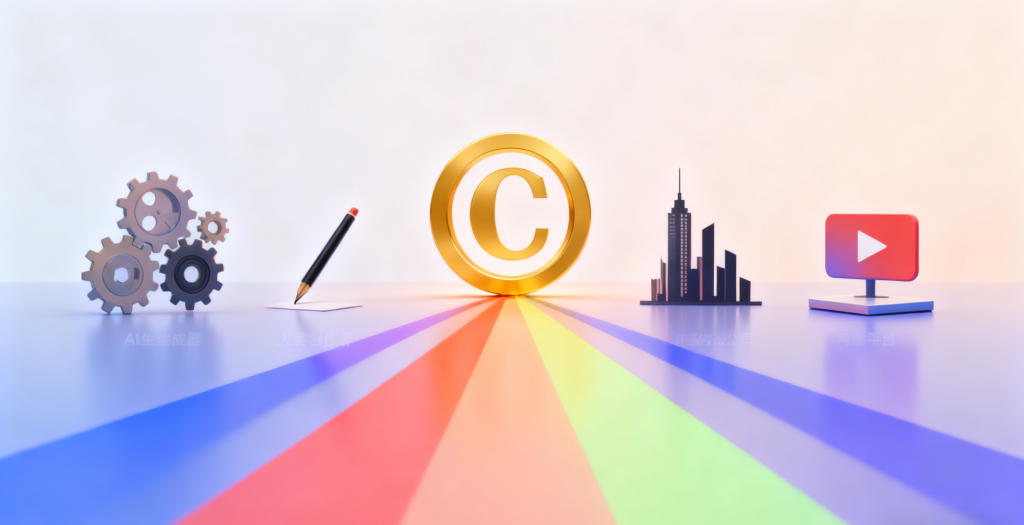
Художники и авторы часто задаются вопросами о том, распространяется ли охрана на результаты работы ИИ, кому принадлежат права и как эффективно лицензировать композиции. Решение этих вопросов дает практическую ясность и повышает уверенность в использовании генеративных инструментов.
Сможет ли музыка, созданная искусственным интеллектом, быть защищена авторским правом в 2025 году?
Да, музыка, созданная искусственным интеллектом, может быть защищена авторским правом, если она отражает значительный творческий вклад человека, отвечающий критериям оригинальности. Во всем мире авторские бюро при предоставлении охраны делают акцент на активном руководстве человека процессом генерации. (musicbusinessworldwide.com)
Кому принадлежат авторские права на музыку, созданную с помощью таких инструментов искусственного интеллекта, как Mureka?
Право собственности остается за человеком-создателем, когда он дает осмысленные подсказки, принимает редакторские решения и завершает процесс создания композиции. Политика Mureka подтверждает исключительные права пользователей на их уникальные произведения, созданные с помощью ИИ. (declom.com)
Как лицензировать музыку AI для коммерческого использования?
Чтобы лицензировать музыку AI на коммерческой основе, выберите модель лицензирования, соответствующую вашим целям, договоритесь о четких условиях использования, включая роялти, эксклюзивность и авторство, и сохраняйте записи о создании, чтобы подтвердить право собственности во время действия соглашений.
Каковы юридические риски использования музыки, созданной искусственным интеллектом?
Основные юридические риски связаны с нелицензионными учебными образцами, неоднозначными претензиями на авторство и неясными условиями контрактов. Стратегии снижения рисков включают проверку лицензий на образцы, документирование человеческого вклада и консультации с правовыми структурами на ранних этапах творческого процесса.
Всестороннее понимание авторских прав и лицензирования музыки AI имеет решающее значение для навигации по меняющемуся правовому ландшафту и обеспечения справедливой компенсации для создателей.
Объединение генеративных инноваций с разумной юридической практикой позволяет создателям музыки использовать потенциал искусственного интеллекта и одновременно защищать свою интеллектуальную собственность.
Благодаря тщательному документированию, грамотному лицензированию и пониманию меняющихся правил, музыканты и продюсеры могут с уверенностью заявить права на свои композиции, созданные с помощью искусственного интеллекта.
Адаптация к ожидаемым законодательным изменениям и этическим соображениям обеспечивает устойчивость стратегий владения на ближайшие годы.
Принятие этих передовых методов позволяет авторам быть в авангарде музыкальных инноваций и правовой определенности.

